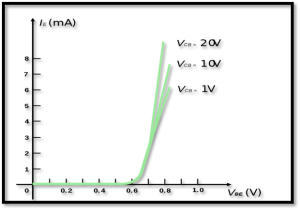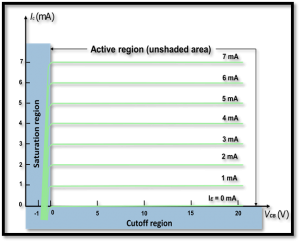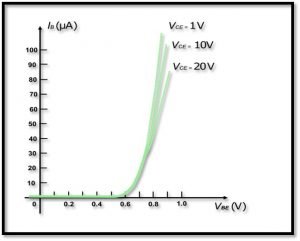- Definition of BJT
- Types of BJT
- Configurations
- Applications
- Advantages & disadvantages
- Different Modes and Characteristics.
Definition of a Bipolar Junction Transistor:
A Bipolar Junction Transistor (also well-known as BJT) is a special type of semiconductor device with three terminals made of p-n junctions. They are able to amplify a signal as well they control current i.e., they are called as current controlled device. The three terminals are Base, Collector & Emitter.
Types of BJT:
There are two types of BJT –
- P-N-P Transistor.
- N-P-N Transistor.
The BJT has three parts named emitter, collector and base. Here, the emitter-based junctions are forward biased and the collector-based junctions are reverse biased.
PNP Bipolar Junction Transistor:
These types of transistors have two p-region and one n region. The n region is sandwiched between two p region.
NPN Bipolar Junction Transistor:
“NPN transistor is a type of Bipolar Junction Transistor (BJT) that consists of three terminals and three layers and function as either amplifiers or electronic switches.”
NPN BJT with forward-biased E–B junction and reverse-biased B–C junction
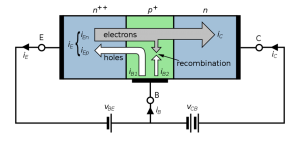
What is punch through breakdown in BJT?
In the reverse biasing configuration, the collector junction is increased, the effective base region decreases. At a certain reverse bias of the collector junction, the depletion region covers the base reducing the effective base width to zero. As the collector voltage penetrates the base, and potential barrier at the emitter junction is reduced. As a result, an excessively large emitter current flows. This phenomenon is known as Punch Through.
Applications of Bipolar Junction Transistor:
There are so many applications of a BJT, some of them are-
- In logic circuits BJT is used.
- Bipolar junction transistor is used as an amplifier.
- This type of transistor utilized as switches.
- To design a clipping circuits, Bipolar Junction Transistor is preferred for wave shaping circuits.
- In demodulation circuits, BJTs are also being used.
Advantages and Disadvantages of a Bipolar Junction Transistor:
A BJT is a one type of a power transistor. It is used in the amplifiers, multi-vibrators, oscillators etc. A BJT also has few disadvantages besides its advantages, they are:
Advantages –
- BJT has a better voltage gain.
- BJT has a high current density.
- Higher Bandwidth
- BJT gives stable performances in higher frequencies.
Disadvantages-
- Bipolar Junction Transistor has a low thermal stability.
- It usually produces more noise. So noise prone circuit.
- It has a small switching frequency.
- The switching time of BJT is not very fast.
Bipolar Junction Transistor Characteristics:
Transistor Characteristics-

Transistor Modes:
The three modes of a transistor are
- CB (Common -Base)
- CE (Common -Emitter)
- CC (Common Collector)
CB-Common Base, CE-Common Emitter and CC- Common Collector Mode of PNP and NPN Transistor has been discussed as follows:
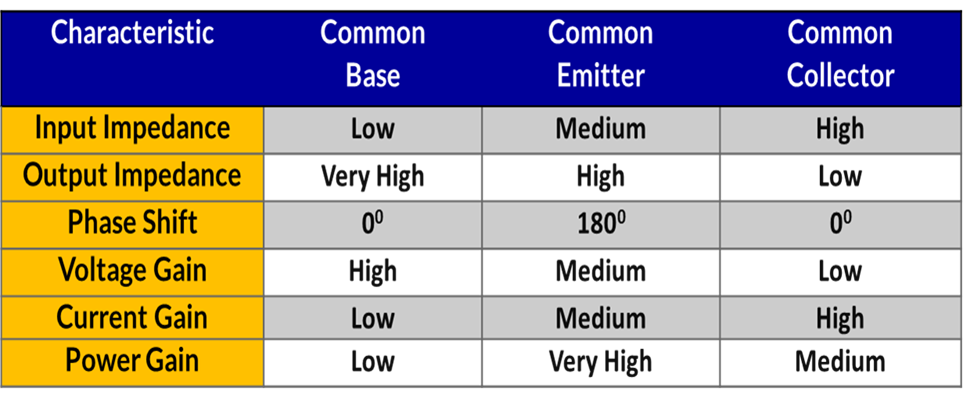
Input Characteristics:
Input characteristics of a transistor is drawn between the Emitter current and Emitter-base Voltage with collector base voltage as a constant.
Output Characteristics:
Out characteristics of a transistor is drawn between the Collector current and Collector-base Voltage with emitter current as a constant.
The output characteristics is distributed into different sections:
The Active Region –
In this Active mode, all together the junctions are in reverse biased and no current pass through the circuitry. Therefore, the transistor stays in the OFF mode; operate as an open switch.
The Saturation Region –
In this Saturation mode, both junctions are forward biased and current pass through the circuitry. Hence, the transistor stays in the ON mode; operate as a closed switch.
Cut-off Region –
In this Cut-off mode, one of the junction is in forward biased and other one is connected in reverse biasing. This Cut-off mode is utilized for current amplification purpose.
CB (Common Base)
In the Common Base mode operation the base is grounded. The E-B junction is connected at forward biased during the standard operation; the input characteristics are analogous to p-n diode. IE get increased with the increase of |VCB|. If the functional voltage at |VCB| increases, the size of the depletion region at the C-B junction enlarged, thereby reducing the effective base region. The “variation of the effective base width” by the voltage applied in collector terminal is termed as early effect.
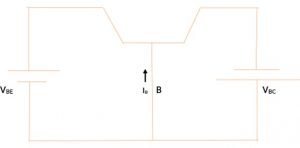
From nodal analysis we know,
IE=IB+IC
Now, α= the ratio of IC & IE
So, α=IC/IE
IC= αIE
IE=IB+ αIE
IB=IE (1- α)
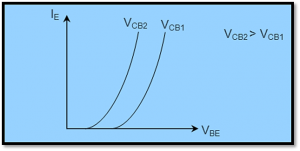
Input characteristic common-base silicon transistor:
Output characteristic common-base silicon transistor:
CE (Common Emitter)
In CE mode, the emitter is grounded and the input voltage is applied in between emitter and base and output is measured from collector and emitter.
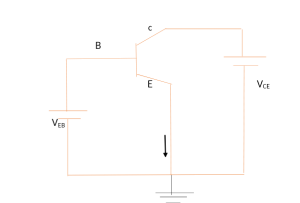
β=ratio between IC & IB
β=IC/IB
IC= βIB
IE=IB+ βIB
IE=IB (1+ β)
The Common Emitter mode, the emitter is common to the input and output of the circuitry. The input current IB is plotted to the voltage VBE with output voltage VCE in the time being. This is because width of depletion region at collector emitter junction increases. This is called Early Effect.
Input characteristic common-emitter silicon transistor
Output characteristic common-emitter silicon transistor
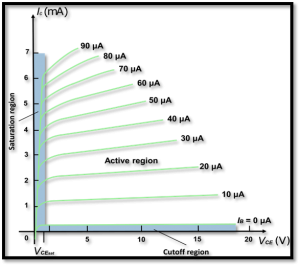
CC (Common Collector)
In CC or Common Collector mode collector has to be grounded and the input is applied from base collector and output is taken from collector to emitter.
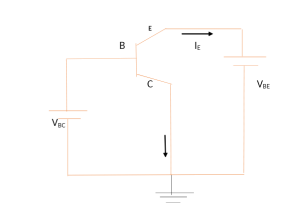
The ratio, IE/IB = IE/IC.IC/IB
Or, IE/IB = β/α
We know α= β (1- α)
β = α β+ α
IE=IB (1+ β)
Relationship between α & β:-
We know,

to know more about transistor click here

Hi, I am Soumali Bhattacharya. I have done Master’s in Electronics.
I am currently invested in the field of Electronics and communication.
My articles are focused on the major areas of core electronics in a very simple yet informative approach.
I am a vivid learner and try to keep myself updated with all the latest technologies in the field of Electronics domains.
Let’s connect through LinkedIn –
